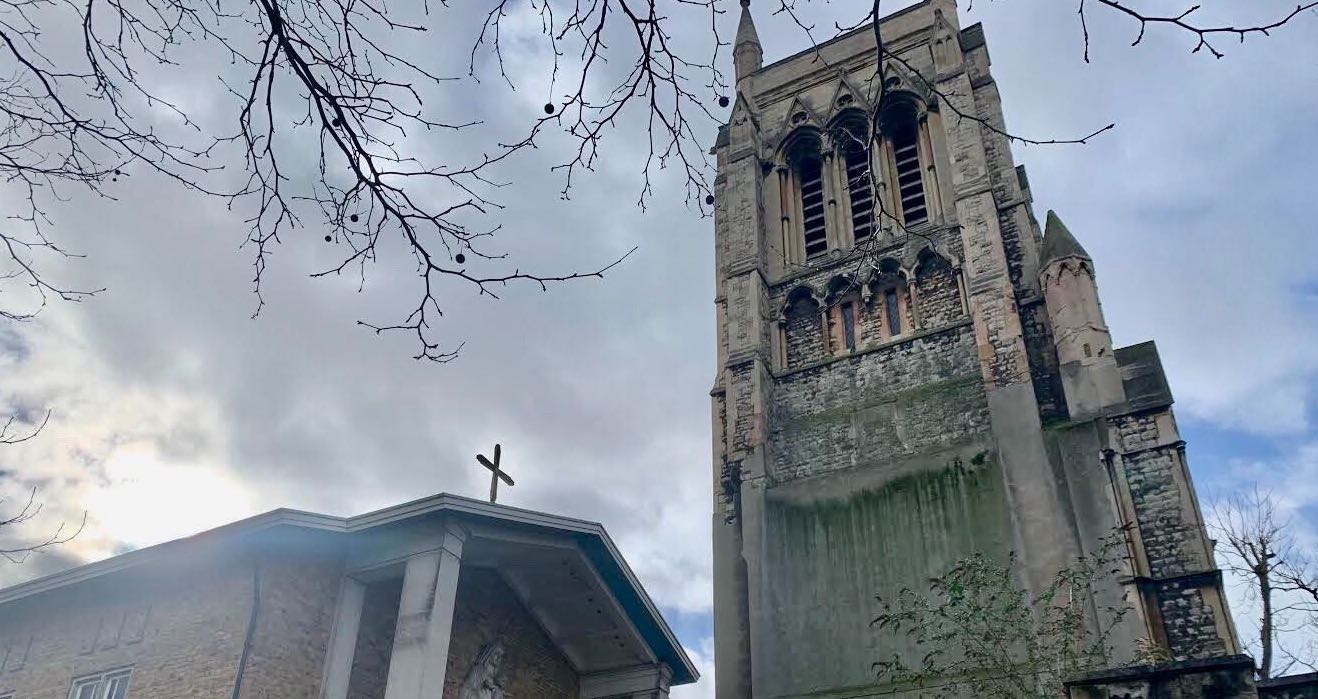A report for the Church Buildings Council has claimed that the Church of England is currently closing more church buildings than at any time since the sixteenth century. And the weight of these closures is falling predominantly in urban areas. Since 1969, about ten percent of the C of E’s churches have been turned into carpet warehouses or yuppie flats or Mosques. I won’t allow mine to be one of them.
But the powerful argument made by hard pressed parish clergy up and down the country is that they didn’t get ordained to become glorified building’s managers. A church is not the building, it is the people. And so many congregations retreat from their cold and leaky building into the local school hall or community centre. The problem here, however, is that the church building is not a mere bricks-and-mortar encumbrance, it is a way of being rooted in a community — a powerful expression of the physical presence of the Christian community over time.
In the vestry of my church is a list of Rectors of the parish going back to 1212. In 1876, the local authorities forced the old church at the Elephant and Castle to be demolished to make way for road widening. A new church was built a few hundred yards away, only to be destroyed by the Luftwaffe during the Blitz. Again it was rebuilt. The bricks of my church are not an inconvenience, a distraction — they are a statement of Christian defiance. And under its roof, Christians from all over the world seek shelter.
Last Sunday morning, we heard a testimony from an Iranian Christian who escaped Tehran hidden in a vegetable lorry after her house group was disappeared (feared murdered) by the authorities. Later, I took Mass for the gathered Zimbabwean community. They had to pack up quickly to make way for the Ethiopians, who in turn had to make way for another group.
The challenges of this ministry are grinding and continual. The violence feels like it is getting worse. A fifteen year old boy was stabbed in the parish last month. The police have done nothing about the anti-Semitic stickers in the local (vandalised) phone box. Increasingly, I feel run down by the constant round of clearing up after the man who uses our Garden of Remembrance as his daily toilet and making sure the heroin needles are thrown away before the children arrive for church. But it is a shared task, and the sharing is bonding. I admit there are times I hanker after a little bit of Dibley, settling down on the sofa for another episode of rural porn, aka Escape to the Country.
But in this constant battle with unpleasantness, the beauty of my church building is an ally not a distraction. Not that everyone would see it as beautiful. Nonetheless, the nineteenth century church builders created a stone tower that withstood the incendiary bombs of the Nazis. And last year, the much loved and polished fifties replacement church was listed. That’s why I spend half my time with developers and architects: the building is a kind of sacrament within the community, an outward sign of a spiritual grace. “I will not cease from mental fight, till Jerusalem is builded here” wrote one local boy, centuries back.











Join the discussion
Join like minded readers that support our journalism by becoming a paid subscriber
To join the discussion in the comments, become a paid subscriber.
Join like minded readers that support our journalism, read unlimited articles and enjoy other subscriber-only benefits.
Subscribe